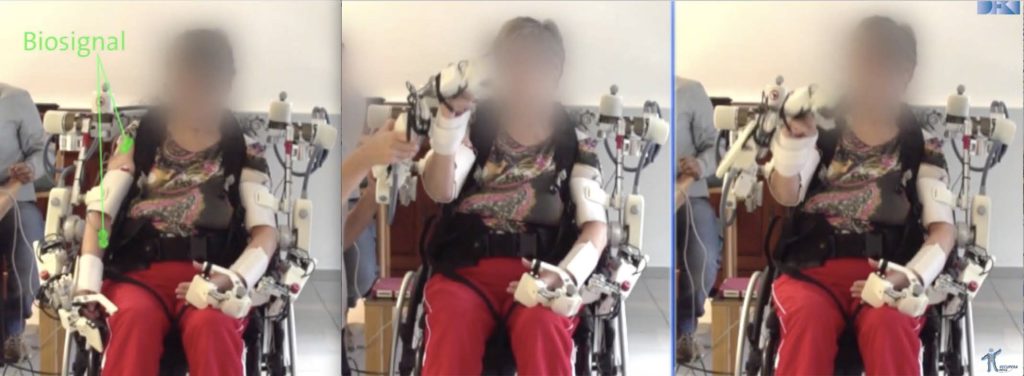We welcome reports of ongoing and completed research that applies neuroscience methods and theories to improving human performance, safety, and satisfaction across different work domains.
We also welcome reports that are purely neuroscience methods and/or theories with the outlook of being applicable to human factors and ergonomics, and research in human factors and ergonomics that present meaningful opportunities for application of neuroscience methods and/or theories.
We welcome submissions that report research at all different stages of a project’s completion. Acceptance will be based on the topical relevance and scientific quality of the written submission, not on the maturity of the work.
Important Dates
02 Apr 2021 – Submission open30 Jun 2021 – Submission deadline30 Jul 2021 – Notification of acceptance15 Aug 2021 – Camera-ready deadline for abstracts- 30 Aug 2021 –Submission of video talks and posters
- 11-12 September 2021 – Full day workshops/tutorials and satellite events
- 13-16 September 2021 – 3rd Neuroergonomics Conference (live)
Review Process
All accepted submissions will be published as open-access conference proceedings in Frontiers in Neuroergonomics. Acceptance will based on a single-blind review process. All submitted abstracts will be peer-reviewed by independent referees selected from our scientific committee and other members of the Neuroergonomics community.
All submissions will receive a rating (i.e., 1-10) that will indicate the reviewers’ subjective opinion of how mature the reported work is: ‘1’ to indicate that the work is speculative and requires empirical support, and ’10’ to indicate that the work is potentially ready for submission as a journal article.
Selected submissions will be invited to be extended for special research topics that will be formed after NEC 2021. Examples of relevant work can be found from articles published in the special issue of Neuroergonomics Conference 2018
Detailed Description of Potential Submissions
Submissions will be defined in terms of: (1) the work domain(s) addressed, (2) the research topic(s) of relevant neuroscientific theory, (3) the neuroscientific method(s) that is applied. This is a non-exhaustive table:
| Work Domains | Research Topics | Methods |
| Aviation & Space | Executive Functions | EEG/MEG |
| Surface Transport | Selective Attention | fMRI/fNIRS |
| Education/Training | Working Memory | Transcranial Neurostim. (tES/tDCS/tACS/rTMS) |
| Healthcare | Emotions | Brain-Computer Interfaces |
| Human Resource | Social Cognition | AR/VR |
| Mobile Computing | Learning | EMG/EMS |
| Accessibility | Development and Aging | Mobile Brain/Body Imaging |
| Security | Human-Machine Teaming | Electrodermal Activity |
| Assembly Operations | Trust in Automation | Gaze Tracking |
The 3rd Neuroergonomics Conference calls for submissions that cover new approaches in neuroscientific theories and methods that can inform and improve human factors and ergonomics across diverse work domains.
Neuroergonomics investigates how the human brain supports operator performance, safety, and satisfaction in natural environments and everyday settings. This discipline has been summarized as the “investigations of the neural bases of mental functions and physical performance in relation to technology, work, leisure, transportation, health care and other settings in the real world” (Parasuraman, 2003). Neuroergonomics integrates advancements of neuroscience and neuroengineering, to provide the flexibility to assess body and brain function in naturalistic work settings, thus bringing neuroscience into everyday life.
The 3rd Neuroergonomics Conference will cover new trends and recent developments related to human technology convergence ranging from theory to practice and current progress ongoing successful initiatives. Potential topics include, but are not limited to:
- Innovative methodologies and protocols using brain activity monitoring techniques and psychophysiological measurements in realistic operational settings,
- Brain computer interfaces and human performance monitoring in ecological conditions,
- Affective computing and Neuroadaptive technologies,
- Robotics and AI
- Mobile Brain-Body Imaging,
- Advances in wearable and portable neuroimaging such as fNIRS/EEG,
- Applications of neurostimulation such as tDCS/tACS/tES/rTMS,
- Applications of neurofeedback/biofeedback mechanisms,
- Advanced signal processing and machine learning techniques,
- Cognitive countermeasures, augmented cognition, and brain stimulations to enhance performance and mitigate human error,
- Virtual/ Augmented Reality and Serious Gaming,
- Affective processing and emotion recognition from neural and physiological measures,
- Assessment of cognition in various neurological disorders and in real-time settings and home environments,
- Human-Machine Teaming and Trust in Autonomous Systems, and
- Memory, skill acquisition and training assessment.
















